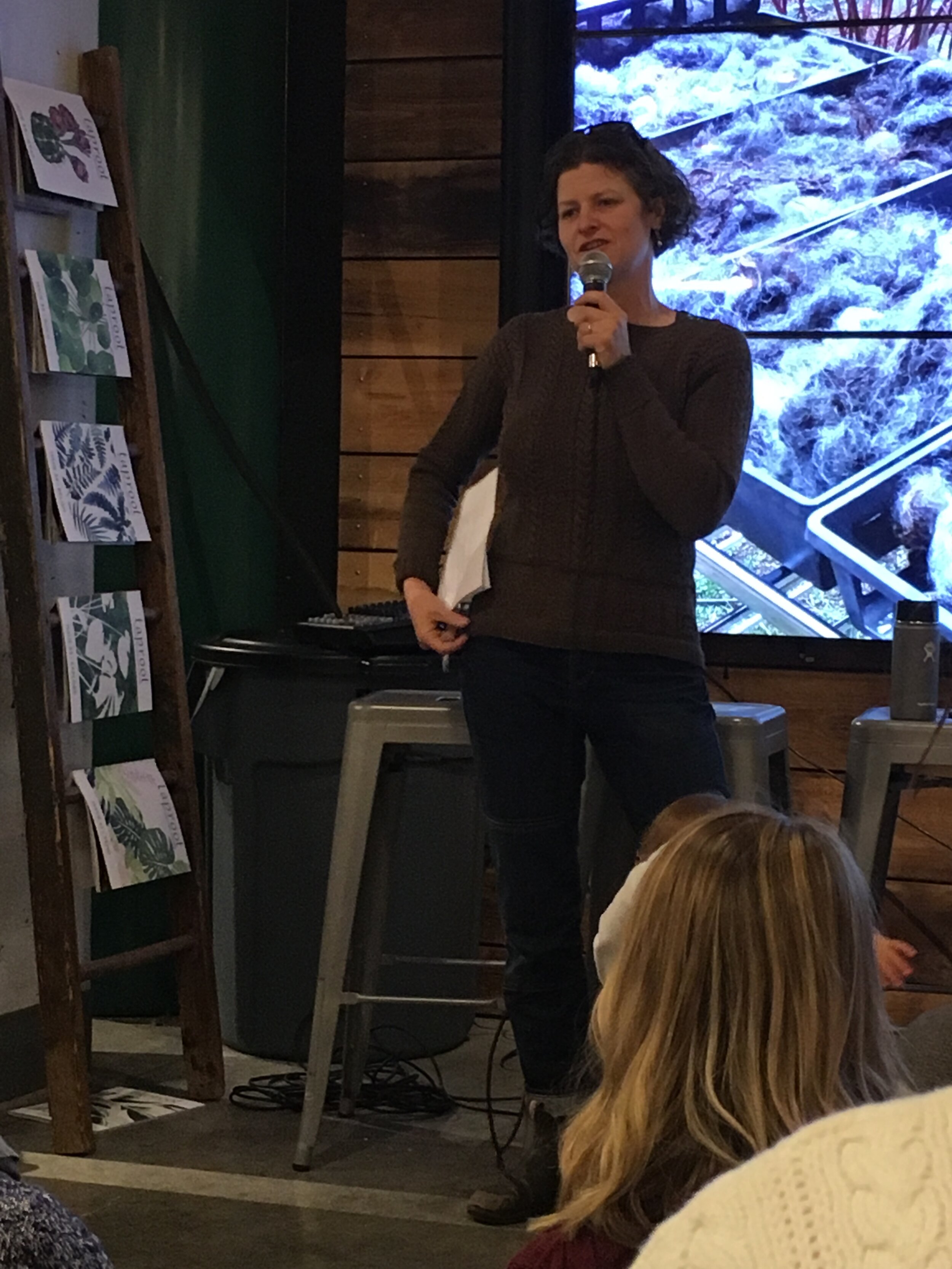In which I talk about ganseys, and try not to make weird noises into the microphone - thank you to Sarah H for the photo
A huge thank you to everyone who came out to the Third Annual Boston Farm and Fiber Festival, and an equally huge thank you to those who paused in their day to listen to me speak with great enthusiasm about ganseys. It is always wonderful to meet other people who share an interest in and love for historically important but currently obscure forms of knitting.
When I imagined the talk, there was a table to share books and ganseys on. Sadly that existed only in my head. So thank you to the folks who were willing to join me on the floor to share their work and thoughts. (Also thanks to Sarah H. for driving to Boston and taking photos).
And a special thank you to the folks who stayed after to share their own gansey related show and tell, and poke through the books I brought, and generally geek out over the very unexpected and unique garment that is the gansey.
And of course a thank you to New England Farm to Fiber and the sponsors, Harrisville Designs and Taproot magazine! Every year the Festival is a little more amazing, with more vendors, more talks, and more enthusiastic fiber folk dressed in their finest.
I will admit that between the stage fright, the strangeness of talking into a microphone, and the general muddle that is my head, I don’t remember much of the actual talk itself, but I did spend the drive home wishing that I had touched on more than I did. Because the history of ganseys encompasses so many elements important to the history of knitting in the UK, and the social history of people who worked on the water, and the differing concepts of geography encoded by one’s relationship to the water and vessel type, and really it is too broad a subject to possibly do justing to in twenty minutes. And that is before one starts talking about the actual garment itself.
And personally it’s a bit weird to talk about any of those things because I am not British, and there is a feeling of cultural appropriation and overlooked nuance. But I am a mariner, and from the perspective of a mariner I can see that previous writers, though British themselves, have missed quite a bit more than nuance in their discussion of ganseys.
Perhaps the paragraph above is really the introduction to a book. We’ll see.
On a more personal note, one thing I also meant to share, and completely overlooked, was the personal history of the working gansey I knit for myself and my husband (who had his own maritime life). Each gansey really deserves it’s own post. Stay tuned.
My ganseys at rest (two of them were knit for my husband). Collectively they have more sea miles than I can count, and more days in shipyard than I care to remember.

























